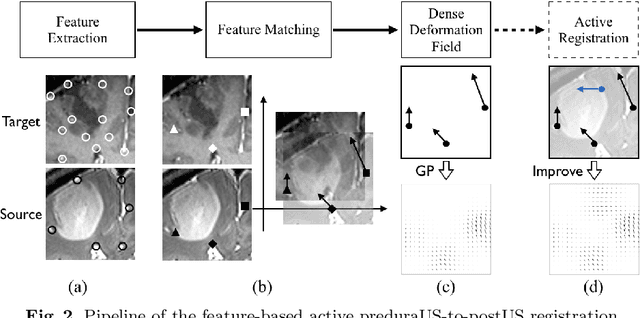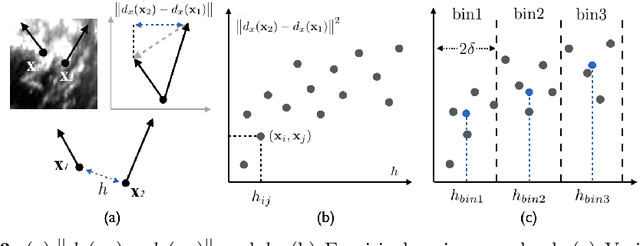Matt Toews
On the Ambiguity of Registration Uncertainty
Mar 20, 2018



Abstract:Estimating the uncertainty in image registration is an area of current research that is aimed at providing information that will enable surgeons to assess the operative risk based on registered image data and the estimated registration uncertainty. If they receive inaccurately calculated registration uncertainty and misplace confidence in the alignment solutions, severe consequences may result. For probabilistic image registration (PIR), most research quantifies the registration uncertainty using summary statistics of the transformation distributions. In this paper, we study a rarely examined topic: whether those summary statistics of the transformation distribution truly represent the registration uncertainty. Using concrete examples, we show that there are two types of uncertainties: the transformation uncertainty, Ut, and label uncertainty Ul. Ut indicates the doubt concerning transformation parameters and can be estimated by conventional uncertainty measures, while Ul is strongly linked to the goal of registration. Further, we show that using Ut to quantify Ul is inappropriate and can be misleading. In addition, we present some potentially critical findings regarding PIR.
A Feature-Driven Active Framework for Ultrasound-Based Brain Shift Compensation
Mar 20, 2018



Abstract:A reliable Ultrasound (US)-to-US registration method to compensate for brain shift would substantially improve Image-Guided Neurological Surgery. Developing such a registration method is very challenging, due to factors such as missing correspondence in images, the complexity of brain pathology and the demand for fast computation. We propose a novel feature-driven active framework. Here, landmarks and their displacement are first estimated from a pair of US images using corresponding local image features. Subsequently, a Gaussian Process (GP) model is used to interpolate a dense deformation field from the sparse landmarks. Kernels of the GP are estimated by using variograms and a discrete grid search method. If necessary, the user can actively add new landmarks based on the image context and visualization of the uncertainty measure provided by the GP to further improve the result. We retrospectively demonstrate our registration framework as a robust and accurate brain shift compensation solution on clinical data acquired during neurosurgery.
Probabilistic Diffeomorphic Registration: Representing Uncertainty
Jan 12, 2017


Abstract:This paper presents a novel mathematical framework for representing uncertainty in large deformation diffeomorphic image registration. The Bayesian posterior distribution over the deformations aligning a moving and a fixed image is approximated via a variational formulation. A stochastic differential equation (SDE) modeling the deformations as the evolution of a time-varying velocity field leads to a prior density over deformations in the form of a Gaussian process. This permits estimating the full posterior distribution in order to represent uncertainty, in contrast to methods in which the posterior is approximated via Monte Carlo sampling or maximized in maximum a-posteriori (MAP) estimation. The frame-work is demonstrated in the case of landmark-based image registration, including simulated data and annotated pre and intra-operative 3D images.
 Add to Chrome
Add to Chrome Add to Firefox
Add to Firefox Add to Edge
Add to Edge